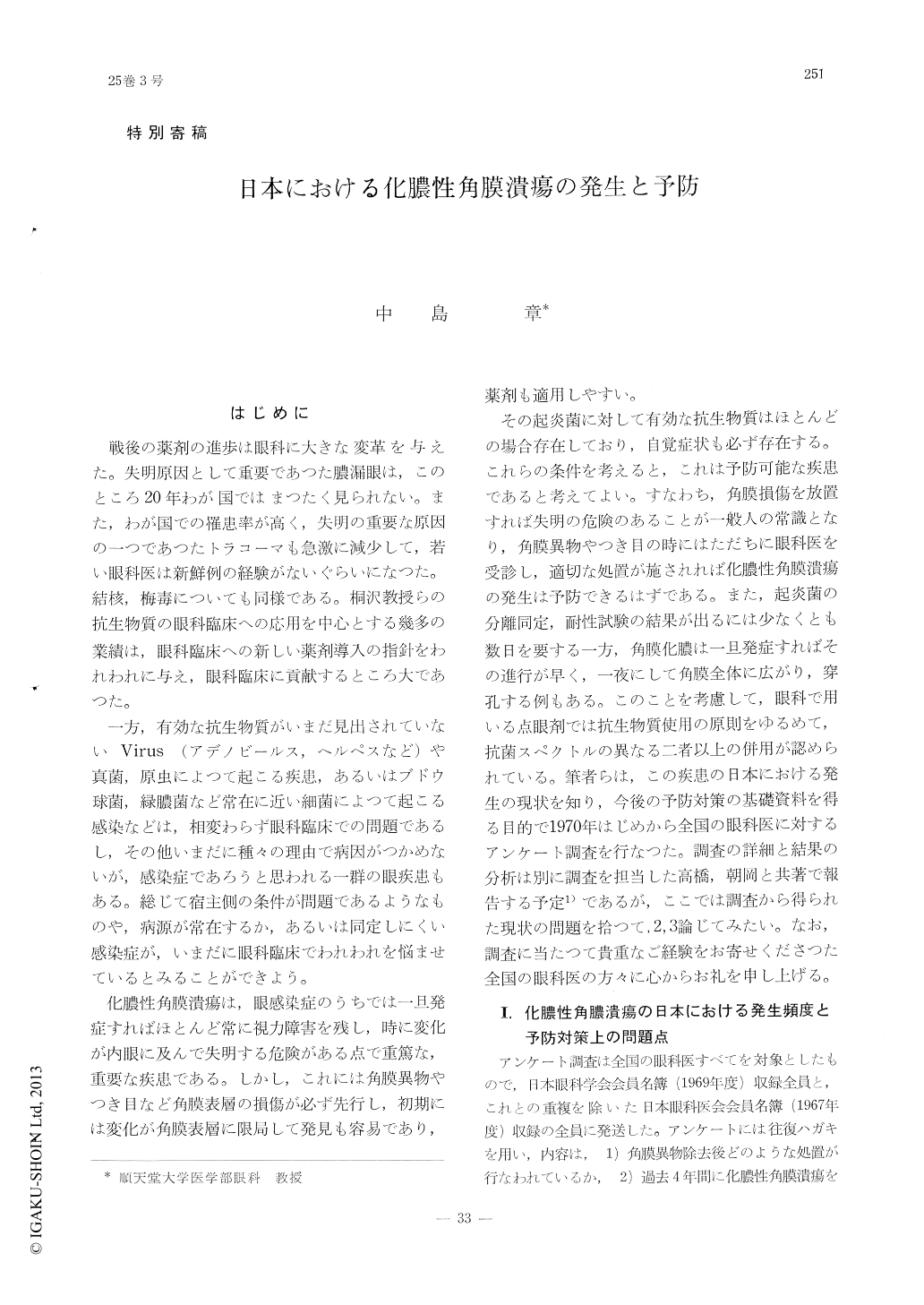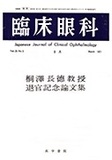Japanese
English
- 有料閲覧
- Abstract 文献概要
- 1ページ目 Look Inside
はじめに
戦後の薬剤の進歩は眼科に大きな変革を与えた。失明原因として重要であつた膿漏眼は,このところ20年わが国ではまつたく見られない。また,わが国での罹患率が高く,失明の重要な原因の一つであつたトラコーマも急激に減少して,若い眼科医は新鮮例の経験がないぐらいになつた。結核,梅毒についても同様である。桐沢教授らの抗生物質の眼科臨床への応用を中心とする幾多の業績は,眼科臨床への新しい薬剤導入の指針をわれわれに与え,眼科臨床に貢献するところ大であつた。
一方,有効な抗生物質がいまだ見出されていないVirus (アデノビールス,ヘルペスなど)や真菌,原虫によつて起こる疾患,あるいはブドウ球菌,緑膿菌など常在に近い細菌によつて起こる感染などは,相変わらず眼科臨床での問題であるし,その他いまだに種々の理由で病因がつかめないが,感染症であろうと思われる一群の眼疾患もある。総じて宿主側の条件が問題であるようなものや,病源が常在するか,あるいは同定しにくい感染症が,いまだに眼科臨床でわれわれを悩ませているとみることができよう。
An enquiry was sent to over 5,000 ophthal-mologists throughout Japan, asking the number of hypopyon ulcer cases seen during the past four years and the way of treatment after re-moval of corneal foreign body. Over 2,000 re-plies were sent back for analysis. The following estimations were obtained from the analysis of the replies.
1) The incidence of purulent corneal ulcer in Japan is estimated to be between 3 and 10 per 105・year, in other words, 3000 to 10,000 cases thro ugout Japan each year.
2) The type of corneal trauma causing the ulcer was: corneal scratch 60%, corneal foreign body 20%, others remaining 20%.

Copyright © 1971, Igaku-Shoin Ltd. All rights reserved.


